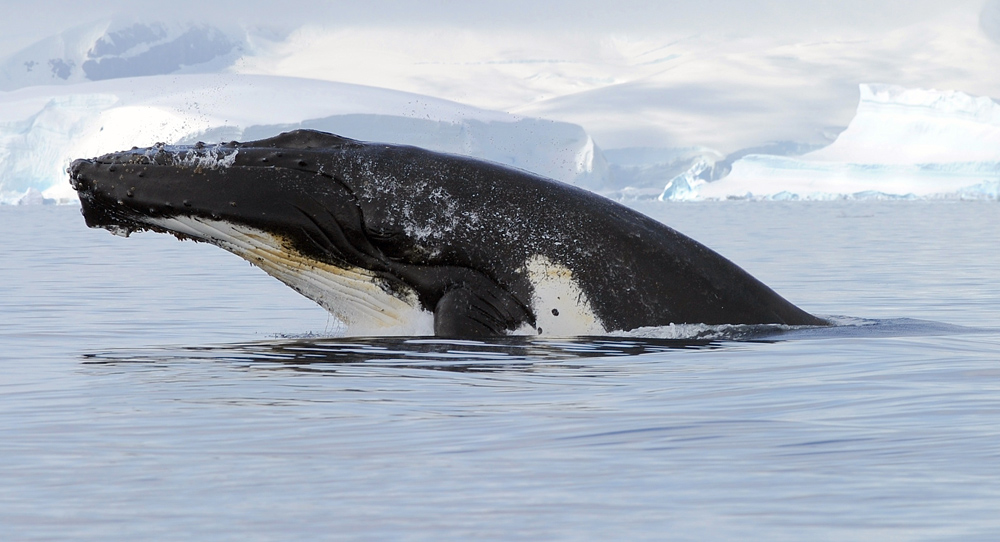Leaping into new territoryPalmer LTER adds whales to marine ecosystem study of Antarctic PeninsulaPosted July 25, 2014
Once upon a time – but not so long ago – humpback whales Today, this baleen whale species is making a comeback, with estimates from the International Whaling Commission (IWC) Their return as one of the main predators in the polar food web has prompted researchers with the Palmer Long Term Ecological Research (LTER) “We now cover the polar marine ecosystem from bacteria to whales,” said Hugh Ducklow Begun in 1990, the Palmer LTER program is a comprehensive ecosystem study of the western side of the Antarctic Peninsula, one of the fastest warming regions on the planet. Average temperatures have increased by a half-degree Celsius per decade since the 1950s. Winter sea ice duration has decreased by an average of three months during that time. The project is interdisciplinary, with scientists studying everything from physical ocean processes like sea-ice formation to bacteria and small crustaceans called krill to predators such as the iconic Adélie penguin Now scientists will attempt to understand how humpback whales and other cetaceans fit into the regional picture, where local Adélie populations are in steep decline as a subantarctic climate pushes inexorably south. “The opportunity was there to get up to speed with whales and how they function as part of the Antarctic ecosystem around the peninsula,” explained Ari Friedlaender It’s a research field he knows well, dating back to the early 2000s during the Southern Ocean Global Ocean Ecosystems Dynamics (SO GLOBEC) More recently, with colleagues from Duke University “Estimating the consumption rate of an individual whale is a challenging process,” Friedlaender noted, because of uncertainties around how many krill are able to escape each whale-sized gulp from the humpbacks, which can grow to 16 meters in length. The researchers are particularly interested in hotspots of biological activity where penguins and whales both compete for krill. “As an open ocean, polar project, we have always felt that we were on the margins of the LTER Network with regard to the central field of ecology, and also direct human impacts on ecosystems,” Ducklow said. “Our new focus on competition between whales and Adélies allows us to test fundamental ecological hypotheses. And we can study the long-term recovery of whales from human exploitation.” Noted Friedlaender of what appears to be a lopsided contest for prey between the two species: “Penguins are more at risk of conditions changing locally and affecting them, while whales can move around and find conditions that suit them best.” |



For USAP Participants |
For The Public |
For Researchers and EducatorsContact UsU.S. National Science FoundationOffice of Polar Programs Geosciences Directorate 2415 Eisenhower Avenue, Suite W7100 Alexandria, VA 22314 Sign up for the NSF Office of Polar Programs newsletter and events. Feedback Form |


